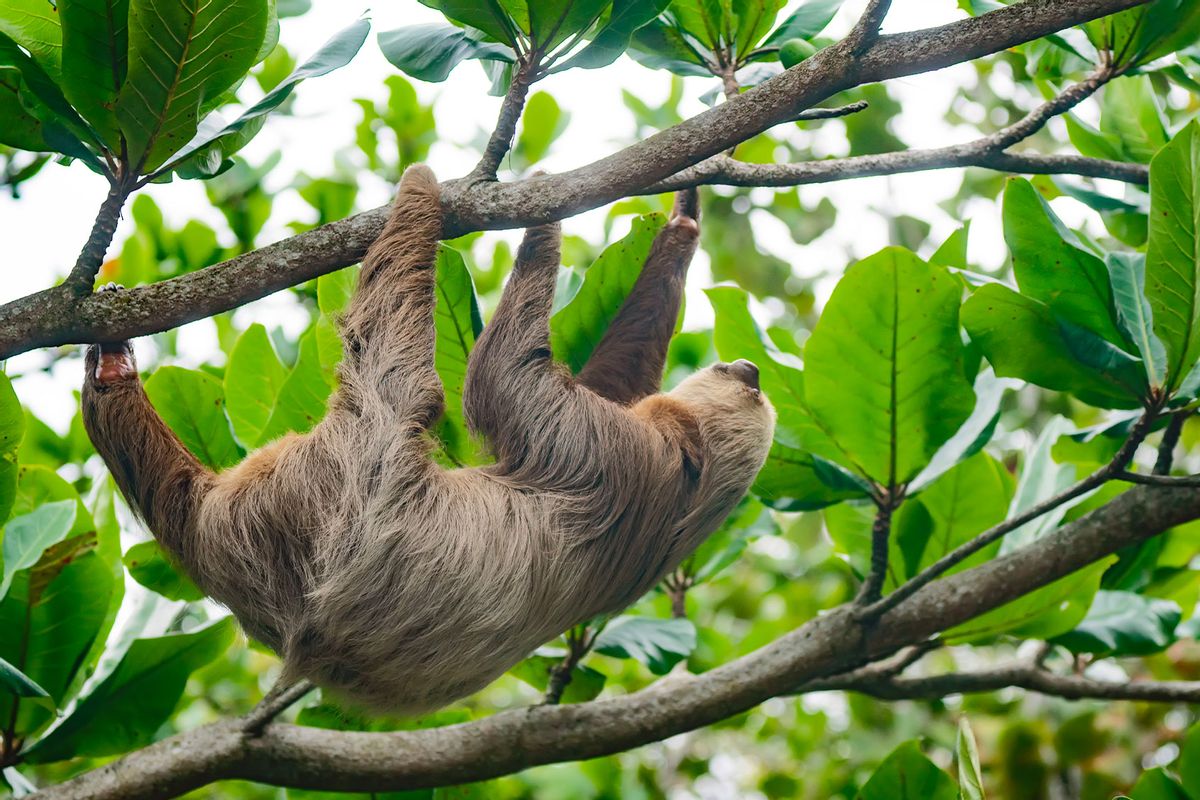Sloths are among the most beloved of jungle animals. The famously sluggish and furry tree-dwellers are found throughout Central and South America, giving off the vibe of relaxed lifestyle. Yet a recent study in the journal PeerJ Life and Environment revealed that sloths' laid back lives are imperiled by the same human-caused problem endangering much of the planet — climate change.
The scientists studied the metabolisms of two-fingered sloths (Choloepus hoffmanni) in both the highland and lowland regions as they respond to various temperatures, particularly those that are anticipated due to climate change. The researchers particularly focused on the animals' core body temperatures and their levels of oxygen consumption. In the process, they discovered that highland sloths experience a sharp spike in their resting metabolic rates as temperatures increase, meaning they will face a high metabolic burden as their ambient temperatures increased by 2º C to 6º C. Because sloths digest food at a rate 24 times slower than most other animals their size, they cannot easily make up for the lack of energy with increased food intake.
"Based on climate change estimates for the year 2100, we predict that high-altitude sloths are likely to experience a substantial increase in metabolic rate which, due to their intrinsic energy processing limitations and restricted geographical plasticity, may make their survival untenable in a warming climate," the authors conclude. "The metabolic impacts of climate change on sloths are expected to be profound."
Sloths are hardly the only animals to be victims of climate change. A 2021 study in the journal Communications Earth & Environment found that the average predicted extinction rate for freshwater animals and plants today is three orders of magnitude higher than it was 66 million years ago during the Cretaceous–Paleogene extinction event. Similarly a 2023 study in the journal Proceedings of the National Academy of Sciences revealed that humanity has caused so many extinctions over the previous five centuries that if our species had never existed, 18,000 years would have needed to pass for that same number of genera to have vanished on its own. Extinction, after all, is a natural occurrence — but the kind that humans are causing is anything but natural and it's a choice we can reverse.
Read more
about climate change



Shares